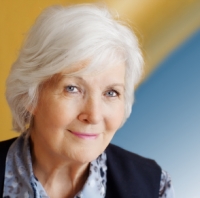Thank you to the Baylor College of Medicine for supplying this article, please share your thoughts and comments below…..
 Three-dimensional digital breast tomography, or 3D mammography, is the most effective technology available for early detection of breast cancer, said experts in the Lester and Sue Smith Breast Center at Baylor College of Medicine.
Three-dimensional digital breast tomography, or 3D mammography, is the most effective technology available for early detection of breast cancer, said experts in the Lester and Sue Smith Breast Center at Baylor College of Medicine.
“Mammography technology has been rapidly advancing since the 1990s. We have cut breast cancer deaths 30 percent as a result of early detection,” said Dr. Emily Sedgwick, director of breast imaging in the Smith Breast Center at Baylor, which is equipped with 3D mammography equipment. “3D mammography is the latest advance in the field and an option all women should be aware of.”
3D mammography has several advantages over two-dimensional mammography, Sedgwick said.
More accurate cancer detection
While 2D mammography would catch approximately four cancers in 1,000 women, 3D technology catches almost double that, Sedgwick said. “There are fewer false positives and an improved cancer detection rate,” she said.
“One of the biggest issues with 2D mammography is the ‘structure noise’ created by overlapping tissue in the breast,” said Sedgwick. “3D mammography reduces that noise to eliminate overlapping structures.”
She used the example of a view of a loaf of raisin bread. “2D is like looking at the outside of the loaf, it looks like raisin bread but you cannot be exactly sure,” said Sedgwick. “There might actually be walnuts in there, or both. 3D gives you an inside view of the bread so you can tell the difference between what might be a walnut or raisin or in the case of breast cancer, benign or malignant growths.
The result has been a significant improvement in detection of invasive cancers –approximately 40 to 53 percent, Sedgwick said. “For these types of faster growing breast cancers, early detection in critical.”
Additionally, the technology is better at detecting cancer in dense breast tissue.
More images in short period of time
Like 2D mammography, 3D takes images in an arc over the breast in a short duration of time (4 seconds), Sedgwick said. “Fifteen images are taken with 3D versus four in 2D.”
Reduced radiation dose
 While radiation exposure in mammography is not a significant risk, 3D mammography has reduced the radiation exposure rate by approximately 45 percent.
While radiation exposure in mammography is not a significant risk, 3D mammography has reduced the radiation exposure rate by approximately 45 percent.
“The amount of radiation exposure endured during a 2D mammogram is equivalent to the amount in an airplane on a cross country flight, so this is not a major concern but we’re able to use less exposure with 3D technology.”
Reduction in the recall rate, or need for additional pictures, is also a factor, Sedgwick said.
“The use of 3D mammography is a win-win-win situation for women,” said Sedgwick.
The technology, approved by the U.S. Food and Drug Administration in 2014, is still new and therefore not all insurance companies are paying for it, Sedgwick said. “Hopefully in the next year more payers will come on board.”
Medicare and Blue Cross Blue Shield are among the groups currently paying for it.
All women should receive a screening mammogram annually beginning at age 40, Sedgwick said.
